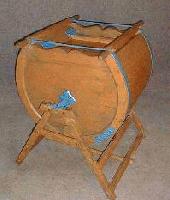
Creative Commons license

Microtonal Music by Prent Rodgers. Made with Csound.
I am a composer of music using Microtonal intonation systems, including the Harry Partch Tonality Diamond. These systems draw on Just Intonation, which is different from the normal 12-tone equal temperment that western music has been based on for the last 300+ years. Some of the tuning may sound "off" to modern ears, but if you listen, you will hear sounds that are unique in the world, with a whole world between the 1:1 and the 2:1 octave.
The music is created using the tool Csound, which is a publicly available, freely distributed digital signal processing tool with the ability to specify exact tone, timbre, and other characteristics of individual tones with greater specificity than the MIDI standard. All the pieces on this site are built using sample-based instruments from the McGill University Master Sample Library.
Song Info
Track Files
Story behind the song
Song Likes
On
Playlists